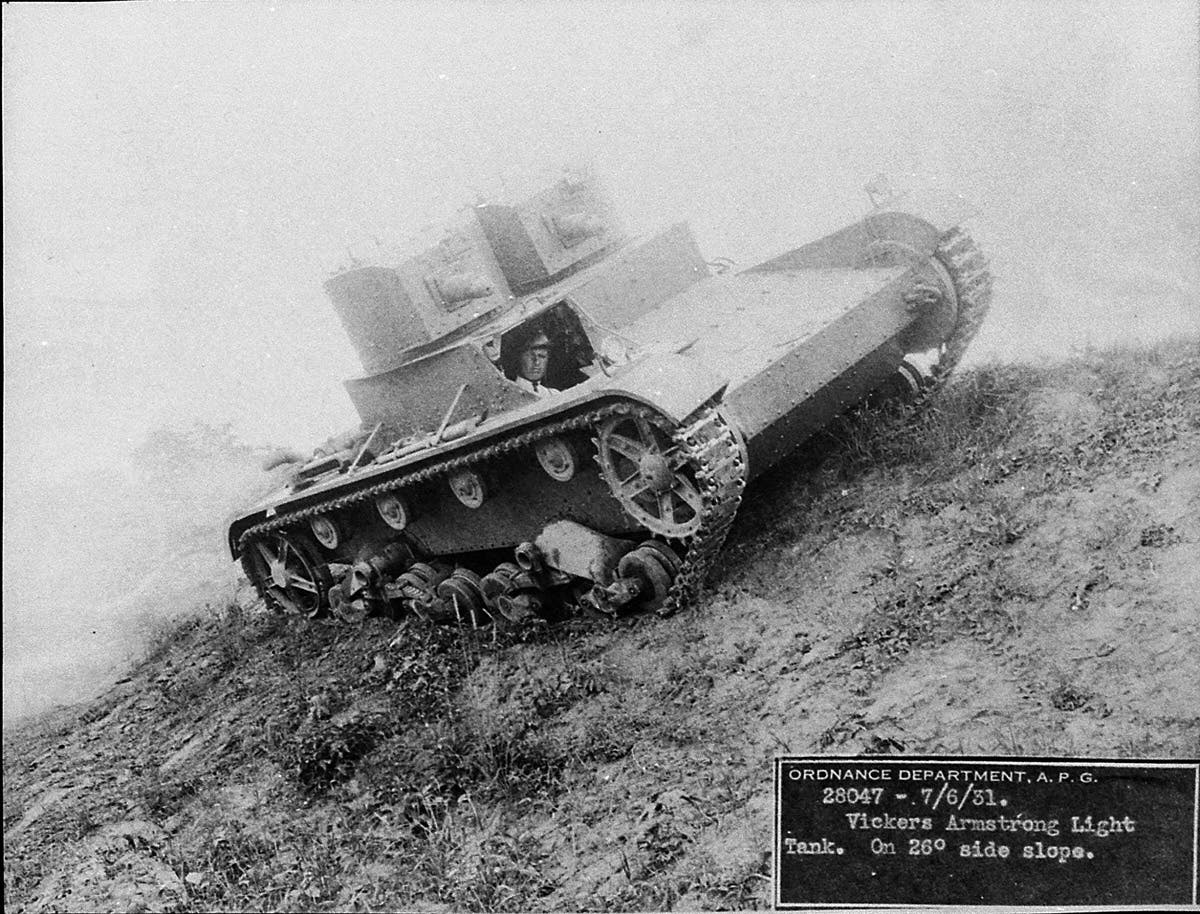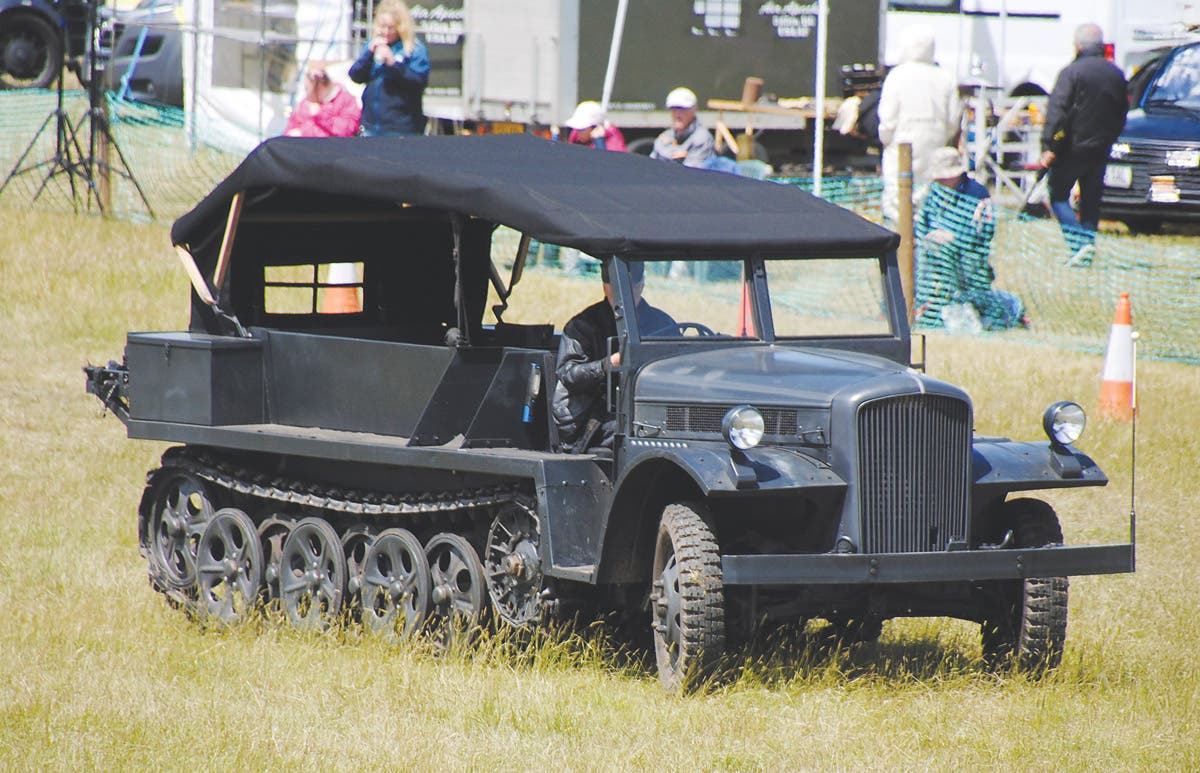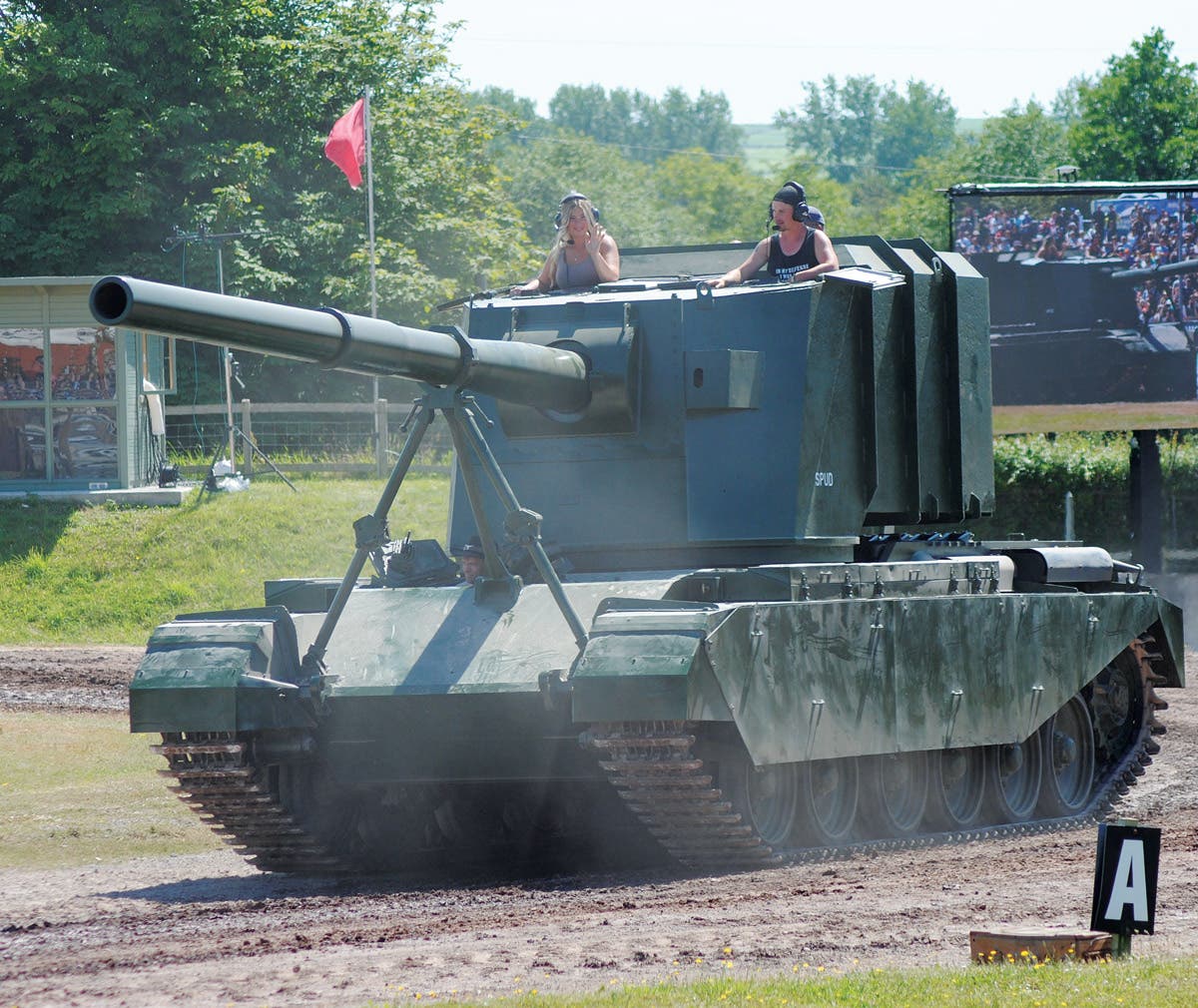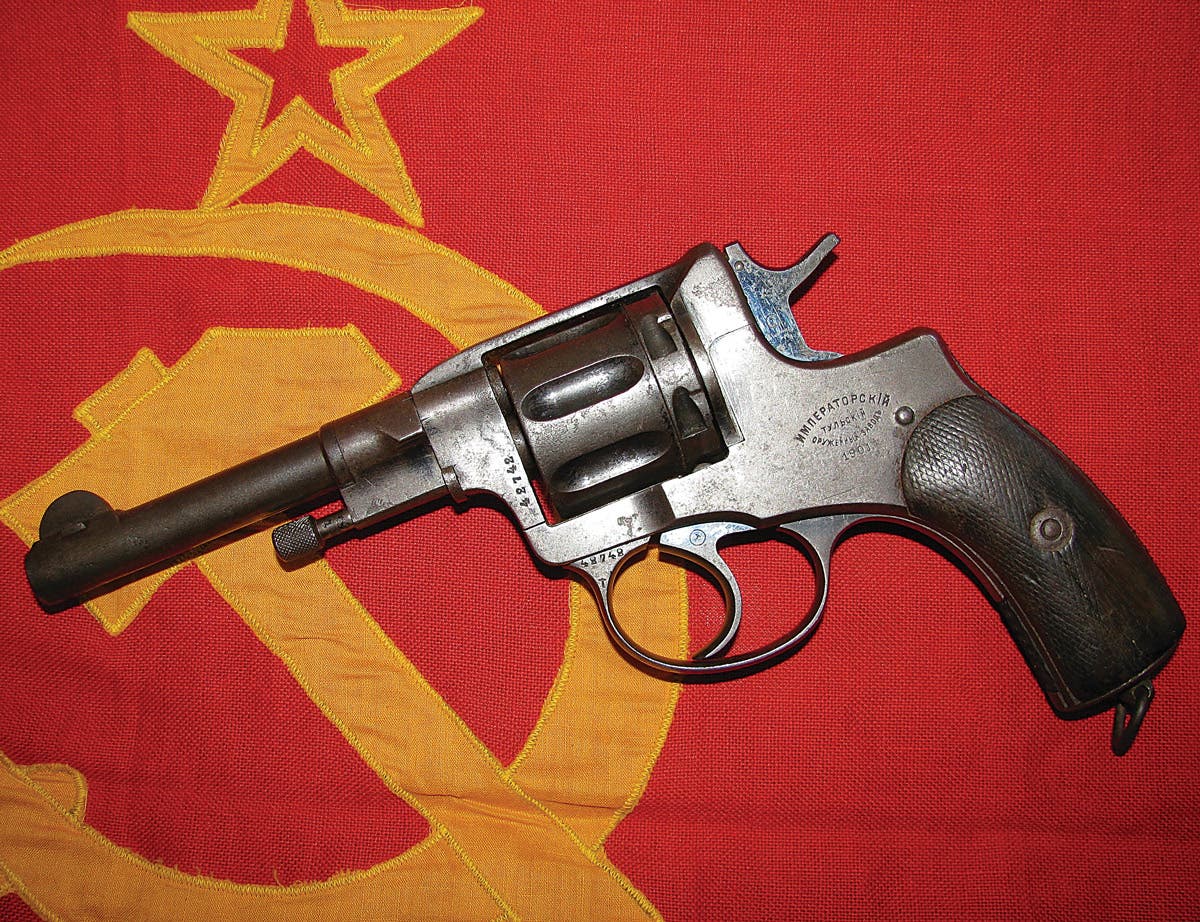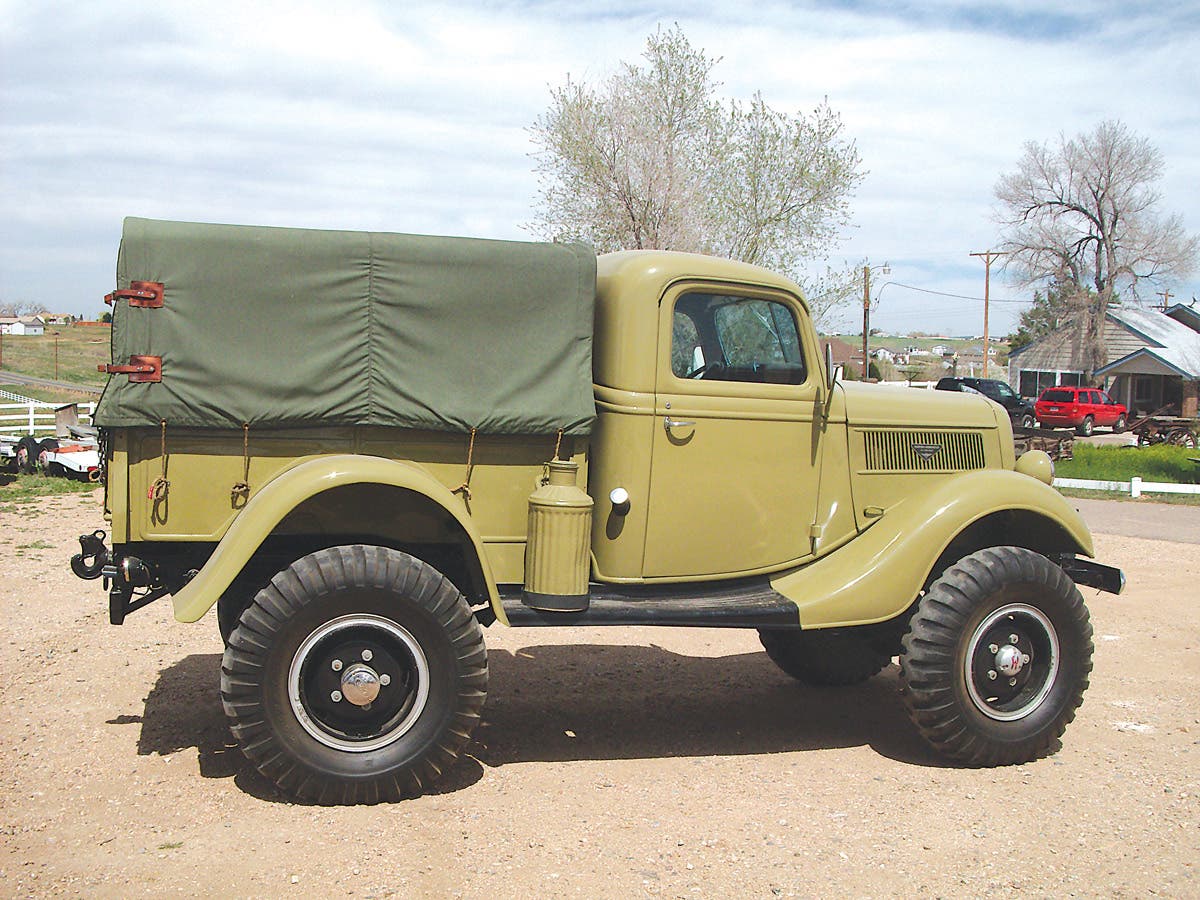The Flying Scooter: A look at the Cushman Model 53
Paratroopers had their own wheels with the Cushman Model 53
When brothers Everett and Clinton Cushman established the Motor Works Company bearing the family name at Lincoln in Nebraska in 1903, they could not have known how important one of the company’s designs in particular would become. The Cushman Company specialized in producing farm equipment, including pumps and other machinery. Then, in 1922, the company began producing the Husky engine and diversified even further in 1936 when it launched the Auto-Glide scooter onto the civilian market.
For some time the U.S. Army had been interested in these small, fuel-efficient scooters due to their maneuverability. They were seen as alternatives to car and trucks for use on bases. When the country went to war in 1941, the interest in Cushman scooters only increased and led to contracts being awarded for machines such as the M39, which would prove ideal to cover short journeys around bases. Between 1943 and 1944, the Cushman Company produced 606 of the three-wheeled Model 39 package delivery scooter and 495 Motor Scooters with sidecar, another three-wheeled design. These were used by the military around the confines of bases to deliver packages and messages and freed up hundreds of other vehicles for use in other duties.
The biggest surprise for the company no doubt came when it received what would turn out to be its biggest military order: a contract to produce series numbers of its Model 53 Scooter, which would become known as the G683 “Airborne Infantry Scooter”. The first US Airborne units had been created in 1942 and would require specialist equipment if they were to operate to their maximum capacity. That is where Cushman’s scooters came into the frame. The company’s Model 53 was seen as being the best option to provide the men with mobility when they landed. The compact size meant the machines could be carried in a glider, for air-landing roles, or dropped by parachute from a larger aircraft such as either the C-46 or C-47.
The G683 was heavy for its size, but being fitted with 20-inch wheels with “balloon” tires, it could cope with most surfaces and wade through water obstacles up to depths of 12 inches. Production started late in the war with 4,233 machines turned out in 1944, followed by a further 501 in 1945 to give an overall wartime production figure of 4,734 machines. Compared to the more than 90,000 conventional motorbikes produced by Harley Davison or the more than 7,600 examples of British Welbike for airborne forces, Cushman’s contribution was small. To be fair, though, airborne units being much smaller than regular infantry and having access to Jeeps meant they did not require large numbers of these machines.
For all intents and purposes, the two-wheeled G683 resembled a scaled-down motorbike. It was fitted with cranked-back handle bars and a single, sprung saddle for the rider, mounted over the engine. The design lacked many refinements — such as a headlight, which was not seen as necessary in combat. It had only two speeds. There were fenders over the front and rear wheels to reduce debris from the road being thrown up. It was built using a skeletal cage-like frame around the engine and extending to the rear wheel, with a foot plate for the rider’s feet. The engine, fitted with a roller-bearing crankshaft, magneto ignition and two-speed gearbox with a hand-operated shift, was kick-started using a foot-operated pedal on the foot rest plate. A foot-operated brake pedal was mounted to the side of front wheel.
The machine had a fuel consumption of 50 miles per gallon, meaning that the 100-mile operational range would be more than sufficient for use in liaison roles or as a dispatch rider delivering messages between units. The G-683 was fitted with a simple hitch attachment which gave it the capability of pulling an M3A4 two-wheeled Utility or General Purpose Trailer. These trailers were not specific to use with the Cushman and could be hauled by hand, using tow ropes, or towed by a variety of vehicles, including Jeeps and Dodge WC52 weapons carriers. The trailers could be used to move weapons such as either .30- or .50- caliber machine guns and 81mm mortars complete with ammunition. When being towed by a G683, weight of these loads was limited by the machine’s capacity, but useful cargoes of food, medical supplies and fuel would have been transported using this combination.
Various methods of delivering the machines to troops by parachute were trialled. Delivering the machines in crates was ruled out because it would have taken too long to unpack them. Packing it into an air-dropped container, like the British had done with the “Welbike”, was also ruled out because of the weight. The only option left was to fit the G683 with attachment points to which a parachute could be clipped. That way, an air dispatcher would simply have to push the load out of the aircraft and let gravity take care of matters.
There was an attachment point located just behind the fuel tank and another on the front frame, just in front of the rider’s legs, below the handle bars. In theory, the machine would have been balanced to land wheels hitting the ground first. However, conditions, such as wind turbulence, could upset that plan and the machines could land awkwardly. Not being protected with padding led to damage to the front forks and frames being bent by the force on impact, rendering them unserviceable. Other losses came when the scootters were blown off course or caught in trees. In an effort to rectify this problems, a larger canopy parachute was trialled and the Cushman Company asked to reinforce the frame. It was decided this would make the scooter even heavier, however, and would only add to the problem rather than solve it.
So just how good was the G683 in combat? Surprisingly few wartime photographs exist showing the Cushman in actual combat use, but from these we know they were used in the European Theaters of Operations. For example, there are some images showing airborne troops riding machines in the vicinity of Bastogne in late 1944. No photographs have, as yet, surfaced which show it being used with the M3A4 trailer combination. That is not to say they did not tow trailers, it’s just that such images have yet to be discovered. Likewise, first-hand accounts of the machines are very scarce, but they must be out there because the machines are known to have been used during the later stages of the war.
Between 1942 and 1945 the Cushman Company was awarded four contacts for motor scooters by the Army and another for spare parts. During the same period the company was awarded four contracts by the U.S. Navy, with all contracts being worth over $1.7 million USD. After the war the G683 was considered obsolete because other vehicles, such as the Jeep, suited the role just as well and were more flexible — something the British airborne units discovered. Those remaining scooters that had not been issued and surplus production models were designated as the Model 53A and sold to the civilian market, proving quite popular because of fuel economy.
Over the years the Cushman has become a popular machine with owners and prices for examples in good condition begin at around several thousand U.S. dollars. Some owners who participate with re-enactment groups in depicting US Airborne units include their Cushman scooters in the display and even demonstrate them by riding the machines in mobility displays. Examples can be seen in various museums and there are several online forums for owners of Cushman machines to keep in touch or ask for support, including the www.cushmanclubofamerica.com



